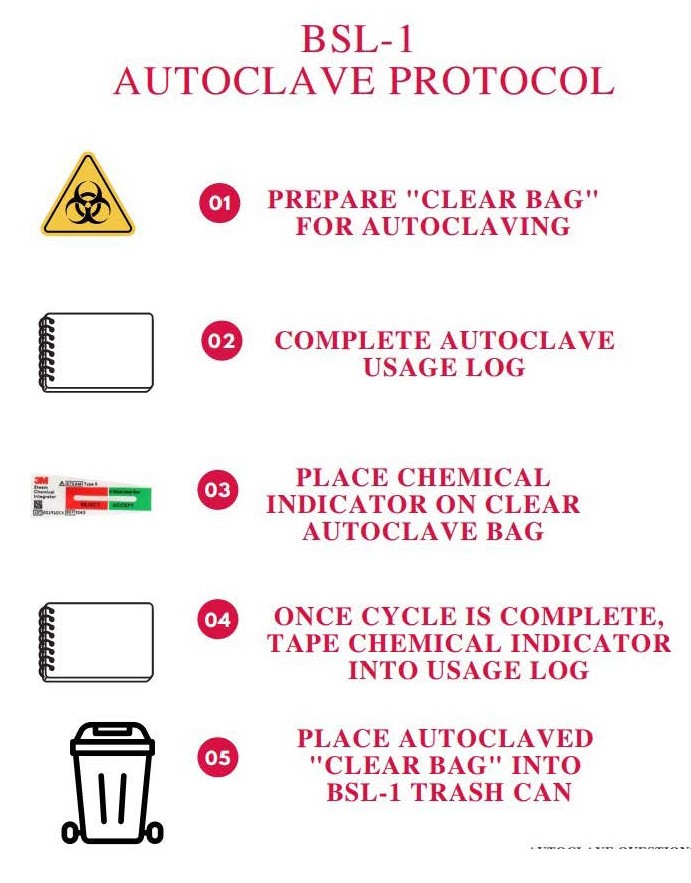Lab Waste
Waste Categories
Follow the procedures described in the Biohazard Waste Plan to properly manage biohazard waste in the lab.
For Blood and Biological releases, refer to Spills.


- Broken glass and empty glass bottles are to be collected in designated glass waste boxes in each laboratory.
- The box may be purchased prefabricated, although standard heavy duty cardboard boxes may be used as long as all original markings on the box are defaced or removed.
- The box must be marked with the words “BROKEN GLASS” on at least opposite sides. The box must be lined with a heavy mil (9mil minimum) plastic bag.
- Do not place bottles or glass in the box that is clearly heavily contaminated with chemical residue or potentially biohazardous substances.
- Free liquids or sharps (needles, razors) may not be placed in the box.
- Do not overfill the box.
- Do not use a large box that will become overly heavy or awkward to lift.
- It is the responsibility of lab personnel to close and tape shut the broken glass box when it is full.
- Be sure no glass or sharp edges are protruding from the box.
- Once taped shut, place the box in the hall outside the lab door for removal by Custodial Services. It is not the responsibility of Custodial Services to tape boxes closed or to remove boxes from laboratories.
DO NOT pour chemical waste down sinks or in storm drains.
Hazardous waste is to be collected in a container that is compatible with the waste. (i.e Don’t put acids in a metal container.)
- Have prepared containers for waste collection prior to beginning experiments.
- Compatible material of the same hazard may be collected in a single container. (Ex. a lab may use a 5-gallon carboy to collect all compatible flammable solvents and alcohols. Another container may be used to collect compatible acidic waste, while a third may be used to collect compatible caustic wastes.)
- If a container that will be used to collect waste previously held a chemical product, be sure the original chemical from the container is compatible with the waste that will be added.
- All waste containers must be closed completely unless waste is being added. This means bottle caps must be screwed on, and lidded funnels must be closed and latched.
Labeling Chemical Waste
Waste collection containers must be labeled with either the full chemical name of the waste (abbreviations are not acceptable on hazardous waste labels), OR a description of the type of waste in the container (Waste Flammable Solvent, Waste Acid Solution).
Prior to labeling a hazardous waste container, be sure that all previous labels or markings are defaced or removed COMPLETELY.
For Chemical spills, refer to Spills.
Contaminated needles and other contaminated sharps are not to be bent, recapped, or removed.
Immediately or as soon as possible after use, contaminated sharps are to be placed in appropriate sharps containers.
The container must be labeled with the biohazard symbol and the words “Sharps” and “Biohazard.”
Sharps and Sharps containers are not to be compacted under any circumstances.
Disposal
EHS handles removal and disposal of all hazardous materials on campus.
Laboratories with higher generation rates of waste will have waste removed on a weekly basis. Labs with lower waste generation rates should call or e-mail the EHS office for waste removal.
Contact EHS at wfuehs@wfu.edu for assistance with collection of hazardous materials for disposal.
